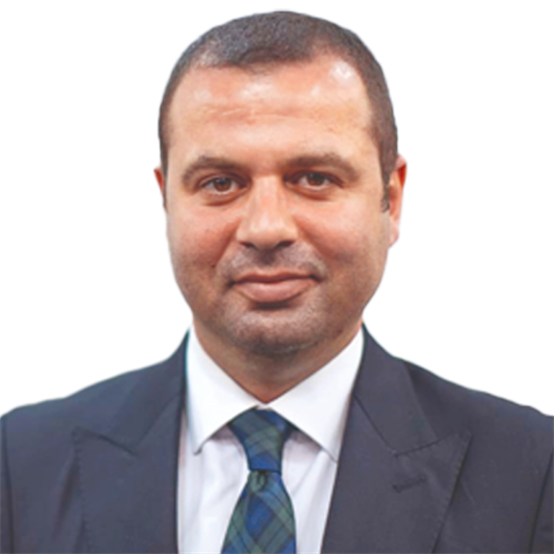
- 27.08.2025, Wednesday
- 10:48
The Russians didn’t deliver a memorandum — they issued an ultimatum
14:449/06/2025, الإثنين
Next article
Yahya Bostan

No one has a magic wand. This is the first major conventional war of the new world order. More than a million people have died. Securing a ceasefire, laying the groundwork for peace, and getting it signed will require a tough and patient effort. The demands of the two sides are worlds apart. That gap won’t close without dialogue. What Turkish diplomacy is trying to do in Istanbul is exactly that: make peace possible by getting the sides to talk. There are stages that need to be completed along the
No one has a magic wand. This is the first major conventional war of the new world order. More than a million people have died. Securing a ceasefire, laying the groundwork for peace, and getting it signed will require a tough and patient effort. The demands of the two sides are worlds apart. That gap won’t close without dialogue.
What Turkish diplomacy is trying to do in Istanbul is exactly that: make peace possible by getting the sides to talk. There are stages that need to be completed along the way. The negotiations held in Istanbul on May 16 and June 2 were part of that process. But those meetings also made it clear just how complicated this road is. We had already shared some details about the tensions during the first round. Now, new reflections are coming out about the second round. Let’s break them down.
OBSERVATION, ANALYSIS, AND INFORMATION…
Observation…
On June 2, this much was clear: the bike wheel is turning. It has to. Otherwise, it falls.
Observation…
Despite the heavy drone strikes on June 1 that dealt significant damage to Russian air power… the second round of talks was more civil and result-oriented compared to the first (though Russian and Ukrainian journalists in Istanbul didn’t show the same courtesy to one another).
Note…
Did the large-scale drone attack on June 1 come up during the negotiations? The Russian side referred to it briefly, without naming it directly: “Incidents like yesterday’s drive us further apart. Both sides need to be careful.”
So why wasn’t there a direct mention of the attack?
Comment: It was likely too significant a blow for them to want to discuss openly at the table.
Analysis…
The outcomes of the first two rounds focused mostly on humanitarian issues (a 1,000-person prisoner swap, exchange of wounded prisoners, return of soldiers’ bodies, etc.)
Is the goal a ceasefire—or talks focused on confidence-building measures? The direction must remain clear.
Information…
Foreign Minister Fidan and intelligence chief Kalın have put in major effort to bridge the gap between the sides.
KYIV CAN’T AFFORD TO REPATRIATE THE BODIES
There were two points agreed upon during the Çırağan talks. First, a prisoner exchange involving around 1,200 people—wounded and ill prisoners, as well as those under the age of 24. Second, the return of fallen Ukrainian soldiers to Kyiv. The Russians say they’re holding the bodies of 6,000 Ukrainian soldiers.
The handover was expected over the weekend. The Russians say they brought the bodies to the designated handover points—but that Ukraine didn’t collect them. Why?
Because when Kyiv takes custody of a fallen soldier, it owes the family $370,000 in compensation. Multiply that by 6,000, and the total reaches $2.2 billion—a cost Ukraine simply can’t cover under current conditions. They’re trying to find a solution.
IT’S NOT JUST RUSSIA ACCUSED OF ABDUCTING CHILDREN
We’ve mentioned it before—Ukraine accuses Russia of abducting children and changing their identities. International organizations report the number of missing children at around 20,000.
But from what I’ve learned, Ukraine isn’t the only one affected. The Russians also claim that Ukraine has abducted Russian children. Yet neither side is willing to formally acknowledge this issue in the talks. They don’t want to take responsibility for such an accusation.
“We didn’t abduct them; we removed them from the conflict zone,” they say.
The argument becomes: “These kids aren’t prisoners, so they can’t be part of a swap.”
Still, there’s talk that in a large-scale exchange, the children could be included in a broader list.
KYIV IS FLEXIBLE—MOSCOW ISN’T BUDGING
Now, to the memorandum issue…
One of the agreements from the first round was that both sides would submit their ceasefire terms in writing. Ukraine shared most of its conditions before even arriving at Çırağan Palace. Compared to round one, Kyiv seems more flexible in one key area: it’s willing to discuss territorial matters based on the current frontlines.
Russia, however, submitted its written conditions only on the day of the meeting. And it seems their stance hasn’t changed. Their written demands reflect the same hardline position from the first round.
They want Russia’s current holdings recognized not just de facto but de jure as Russian territory. They’re calling for Ukrainian troops to withdraw from parts of the five regions Moscow hasn’t fully taken. They want Ukraine to nearly disarm, remain neutral, and prohibit foreign military presence on its soil.
Which is why many say: this wasn’t a memorandum—it was an ultimatum.
ONLY PUTIN CAN END THIS
From what I’ve gathered… A third round of talks is possible. Likely in Istanbul again. Preparations are underway. Kyiv is pushing for another meeting by the end of June.
But they’re emphasizing this: “There’s a massive gap in expectations. Only a leaders’ summit can bridge it.”
They’re not wrong. President Erdoğan thinks the same. In fact, he said, “My wish is to bring Putin and Zelensky (and even Trump) together in Istanbul or Ankara.”
So, would Putin come to the table?
Putin’s view is this: “Peace will happen when I decide. Now is not the time.” Why?
Despite drone sabotage tarnishing his image, he still holds strong ground militarily. He sees the negotiation table not as a path to peace, but as leverage to boost his position on the battlefield.
The war is grinding, but Russia can sustain it financially and demographically.
The West is tied up. Sanctions haven’t broken Russia’s back.
The old Western coalition is gone. Putin considers Trump outside the opposing camp. Trump continues to engage with Putin despite Russia’s hard stance (their last meeting was June 4). Trump tells Europeans, “This isn’t my war.”
Meanwhile, the U.S. no longer shows interest in military aid coordination meetings for Ukraine.
And most critically… U.S. media is reporting that America is signaling a shift away from Europe. Meaning?
Just as the U.S. aims to reduce its bases in Syria from 9 to 1, it might soon announce a similar move for Europe.
In such a geopolitical context, Türkiye’s importance rises. We can see that clearly. The real question is: do the Europeans see it too?
#Russia
#Ukraine
#Türkiye
#Putin
#Zelenskyy
#Memorandum
LEGAL NOTICE
The BIST name and logo are protected under the "Protected Trademark Certificate" and cannot be used, quoted, or altered without permission.All rights to the information disclosed under the BIST name are entirely owned by BIST and cannot be republished. Market data is provided by iDealdata Financial Technologies Inc. BIST stock data is delayed by 15 minutes.






